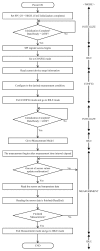Development of a High-Sensitivity Wireless Accelerometer for Structural Health Monitoring
- PMID: 29342102
- PMCID: PMC5795593
- DOI: 10.3390/s18010262
Development of a High-Sensitivity Wireless Accelerometer for Structural Health Monitoring
Abstract
Structural health monitoring (SHM) is playing an increasingly important role in ensuring the safety of structures. A shift of SHM research away from traditional wired methods toward the use of wireless smart sensors (WSS) has been motivated by the attractive features of wireless smart sensor networks (WSSN). The progress achieved in Micro Electro-Mechanical System (MEMS) technologies and wireless data transmission, has extended the effectiveness and range of applicability of WSSNs. One of the most common sensors employed in SHM strategies is the accelerometer; however, most accelerometers in WSS nodes have inadequate resolution for measurement of the typical accelerations found in many SHM applications. In this study, a high-resolution and low-noise tri-axial digital MEMS accelerometer is incorporated in a next-generation WSS platform, the Xnode. In addition to meeting the acceleration sensing demands of large-scale civil infrastructure applications, this new WSS node provides powerful hardware and a robust software framework to enable edge computing that can deliver actionable information. Hardware and software integration challenges are presented, and the associate resolutions are discussed. The performance of the wireless accelerometer is demonstrated experimentally through comparison with high-sensitivity wired accelerometers. This new high-sensitivity wireless accelerometer will extend the use of WSSN to a broader class of SHM applications.
Keywords: high-sensitivity accelerometer; structural health monitoring; wireless smart sensor.
Conflict of interest statement
The authors declare no conflict of interest.
Figures
















Similar articles
-
Development and Validation of a Framework for Smart Wireless Strain and Acceleration Sensing.Sensors (Basel). 2022 Mar 3;22(5):1998. doi: 10.3390/s22051998. Sensors (Basel). 2022. PMID: 35271144 Free PMC article.
-
Development of Synchronized High-Sensitivity Wireless Accelerometer for Structural Health Monitoring.Sensors (Basel). 2020 Jul 27;20(15):4169. doi: 10.3390/s20154169. Sensors (Basel). 2020. PMID: 32727037 Free PMC article.
-
Sudden Event Monitoring of Civil Infrastructure Using Demand-Based Wireless Smart Sensors.Sensors (Basel). 2018 Dec 18;18(12):4480. doi: 10.3390/s18124480. Sensors (Basel). 2018. PMID: 30567375 Free PMC article.
-
An overview of wireless structural health monitoring for civil structures.Philos Trans A Math Phys Eng Sci. 2007 Feb 15;365(1851):345-72. doi: 10.1098/rsta.2006.1932. Philos Trans A Math Phys Eng Sci. 2007. PMID: 17255043 Review.
-
Emerging Trends in the Integration of Smart Sensor Technologies in Structural Health Monitoring: A Contemporary Perspective.Sensors (Basel). 2024 Dec 21;24(24):8161. doi: 10.3390/s24248161. Sensors (Basel). 2024. PMID: 39771896 Free PMC article. Review.
Cited by
-
Self-Monitoring Performance of 3D-Printed Poly-Ether-Ether-Ketone Carbon Nanotube Composites.Polymers (Basel). 2022 Dec 20;15(1):8. doi: 10.3390/polym15010008. Polymers (Basel). 2022. PMID: 36616358 Free PMC article.
-
Development of Low-Cost Wireless Sensing System for Smart Ultra-High Performance Concrete.Sensors (Basel). 2021 Sep 24;21(19):6386. doi: 10.3390/s21196386. Sensors (Basel). 2021. PMID: 34640703 Free PMC article.
-
Developing and Testing High-Performance SHM Sensors Mounting Low-Noise MEMS Accelerometers.Sensors (Basel). 2024 Apr 10;24(8):2435. doi: 10.3390/s24082435. Sensors (Basel). 2024. PMID: 38676052 Free PMC article.
-
Edge Integration of Artificial Intelligence into Wireless Smart Sensor Platforms for Railroad Bridge Impact Detection.Sensors (Basel). 2024 Aug 30;24(17):5633. doi: 10.3390/s24175633. Sensors (Basel). 2024. PMID: 39275541 Free PMC article.
-
Development and Validation of a Framework for Smart Wireless Strain and Acceleration Sensing.Sensors (Basel). 2022 Mar 3;22(5):1998. doi: 10.3390/s22051998. Sensors (Basel). 2022. PMID: 35271144 Free PMC article.
References
-
- Kim S., Pakzad S., Culler D.E., Demmel J., Fenves G., Glaser S., Turon M. Health monitoring of civil infrastructures using wireless sensor networks; Proceedings of the 6th International Symposium on Information Processing in Sensor Networks, 2007, IPSN 2007; Cambridge, MA, USA. 25–27 April 2007.
-
- Fortino G., Guerrieri A., O’Hare G.M.P., Ruzzelli A. A flexible building management framework based on wireless sensor and actuator networks. J. Netw. Comput. Appl. 2012;35:1934–1952. doi: 10.1016/j.jnca.2012.07.016. - DOI
-
- Balageas D., Fritzen C.P., Gemes A. Structural Health Monitoring. Wiley; London, UK: 2006. Introduction to structural health monitoring.
-
- Wong K.Y. Instrumentation and health monitoring of cable-supported bridges. Struct. Control Health Monit. 2004;11:91–124. doi: 10.1002/stc.33. - DOI
-
- Li S., Laima S., Li H. Cluster analysis of winds and wind-induced vibrations on a long-span bridge based on long-term field monitoring data. Eng. Struct. 2017;138:245–259. doi: 10.1016/j.engstruct.2017.02.024. - DOI
MeSH terms
LinkOut - more resources
Full Text Sources
Other Literature Sources
Research Materials

